1. Crater Lake, Oregon
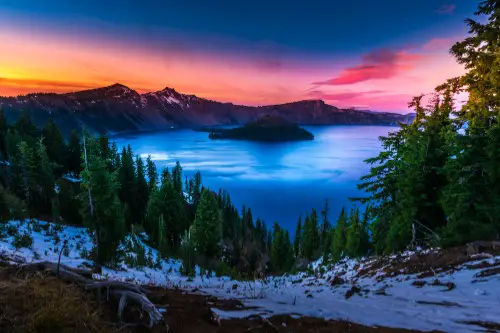
Crater Lake’s depth is no myth — it’s the deepest lake in the U.S., hitting 1,943 feet. But what makes it feel bottomless is how dramatically it drops off from the rim, surrounded by sheer cliffs. Formed from a collapsed volcano, the lake sits in a perfectly round caldera, giving it an otherworldly vibe. The ultra-clear, sapphire water only adds to the mystique.
Many Native American legends speak of spiritual battles that occurred there, and some say it’s a place where spirits dwell. Because no rivers or streams feed the lake, its stillness is unnerving to some. Visibility often exceeds 100 feet, making it hard to tell where the water ends and the abyss begins. Even scientists note that the lake’s optical properties can distort depth perception.
2. Lake Tahoe, California/Nevada

Locals have long whispered that Lake Tahoe is bottomless — or at least, impossibly deep. While it’s not actually bottomless, it is the second-deepest lake in the U.S., plunging to a staggering 1,645 feet. The deep blue water and sheer cliffs only add to the illusion of infinite depth. Some old-timers even claim mobsters used it as a dumping ground, and the bodies never surfaced.
Scientists say the lake’s clarity and depth make it difficult to gauge how deep it really is by sight alone. Underwater currents also give the eerie impression that things can just vanish. There’s even a persistent myth that divers have seen mummified bodies preserved by the cold. Despite modern equipment disproving the “bottomless” claim, the legend lives on.
3. Lake Chelan, Washington
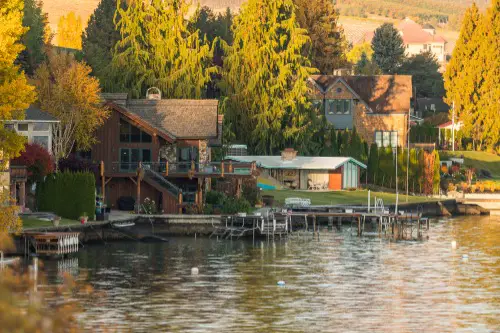
This long, narrow lake snakes its way through the North Cascades, diving to depths of 1,486 feet. Its deepest point is actually below sea level, making it one of the few lakes in North America to hold that distinction. Visitors often say it feels like the lake “goes on forever,” especially given its fjord-like shape. The steep sides and cold, dark water add to its mystery.
Historically, Indigenous stories have warned of water spirits that live in its depths. Old stories also claim that boats and people have vanished without a trace. Despite modern sonar mapping, parts of the lake’s basin remain largely unexplored. The sense of the unknown fuels the local belief that this is no ordinary lake.
4. Walden Pond, Massachusetts
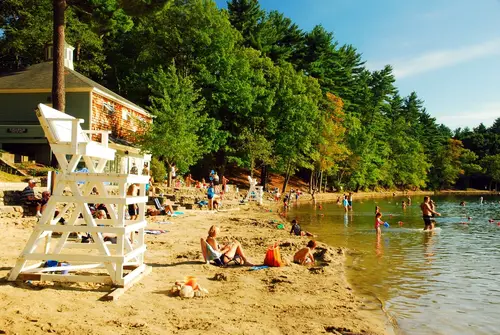
Thoreau made it famous, but locals have long believed Walden Pond was far deeper than it really is. At 103 feet, it’s not even close to the deepest in the state — but its steep banks and sudden drop-offs make it feel like it could be bottomless. Early settlers reportedly couldn’t touch the bottom with their longest ropes. That, combined with its unusually still waters, gave rise to myth.
Thoreau himself referred to it as “unfathomable,” which likely fed the lore. Even today, some locals claim you can hear strange echoes from beneath the surface. It’s a glacial kettle hole, formed when a chunk of ice from a retreating glacier melted in place. That glacial history gave it its steep sides and still, dark waters.
5. Flathead Lake, Montana
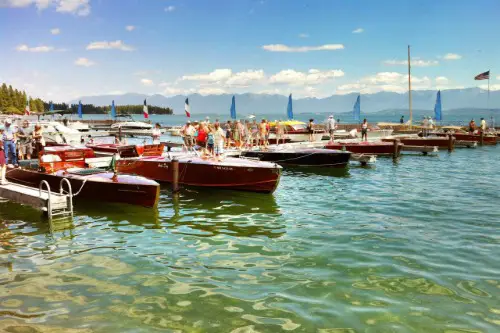
Flathead Lake is the largest natural freshwater lake west of the Mississippi, and it’s also among the clearest. At 370 feet deep, it’s not the deepest — but the visibility is so good, it tricks your eyes into thinking it drops forever. Locals say on calm days, you can see 20 feet down, maybe more. That illusion, combined with its size, fuels the “bottomless” legend.
There are also frequent stories of giant fish or lake monsters lurking in its depths. Native Salish and Kootenai tribes have told stories about such creatures for generations. Several reports claim that even modern sonar has picked up “something big” moving deep below. Whether it’s a sturgeon or just local imagination, the lake’s clarity keeps the myths alive.
6. Lake George, New York

Known as the “Queen of American Lakes,” Lake George reaches depths of about 200 feet. But due to its crystal-clear water and long, narrow shape, people often overestimate how deep it really is. Early settlers believed it was bottomless because lead lines used for depth measurement often failed to hit the lakebed. It didn’t help that sections drop off suddenly near the shore.
The lake’s visual trickery made it a hotspot for ghost stories and superstitions. One tale involves a sunken horse-drawn carriage that no diver could find. Others believe relics from the Revolutionary War lie lost in the lake’s murky corners. The real truth may not be as spooky, but the lore remains.
7. Lake Superior, Michigan/Wisconsin/Minnesota
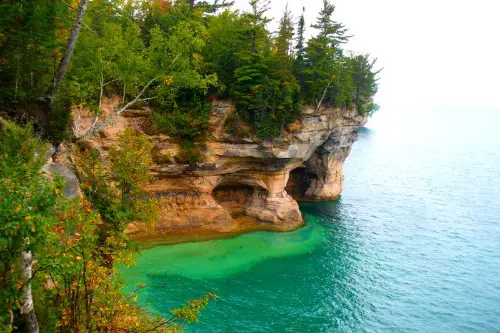
Lake Superior is more ocean than lake in many people’s minds — vast, icy, and deeply mysterious. It’s the deepest of the Great Lakes, hitting 1,332 feet, and holds more water than all the others combined. The cold temperature means things don’t decompose quickly, adding a creepy permanence to shipwrecks. Stories abound of ghost ships and unexplained disappearances.
Even experienced mariners talk about the strange currents and fogs that can roll in without warning. With over 350 shipwrecks resting beneath, including the famous Edmund Fitzgerald, it’s no wonder people see it as bottomless. Some fishermen even refuse to go out without making traditional offerings. That respect borders on fear — and it’s not unfounded.
8. Devil’s Lake, North Dakota
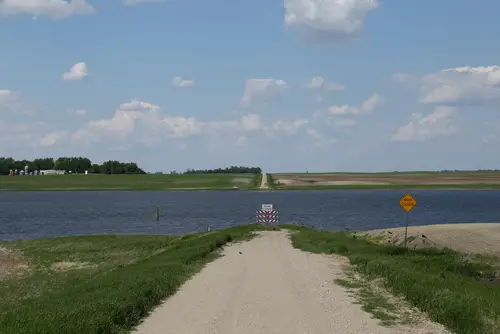
Devil’s Lake isn’t especially deep — only around 50 feet — but that hasn’t stopped the “bottomless” rumors. The name itself sets the stage for unsettling legends. Locals say that sunken farmhouses and entire towns lie preserved at the bottom. During flooding in the 1990s, buildings really were swallowed up, fueling even more speculation.
Fishermen have reported snagging odd objects from depths that seem impossible for such a shallow lake. And with fluctuating water levels, parts of the old lakebed have become re-submerged, adding confusion. The lake’s murky, algae-filled waters make it impossible to see more than a few feet down. That obscurity makes it ripe for exaggerated tales.
9. Mono Lake, California
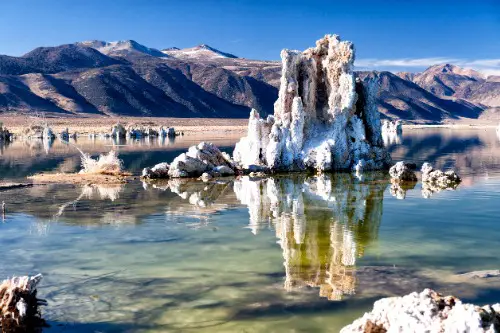
Mono Lake is strange on every level — from its high salinity to its alien-looking tufa towers. Though only about 159 feet deep, the lake has inspired countless tales of bottomless pits and underwater caves. Early settlers were baffled by its harsh, lifeless appearance and assumed it was hiding secrets. Some even believed it connected to underground tunnels leading to the Sierra Nevada.
Because nothing lives in it but brine shrimp and algae, it has an otherworldly stillness. People often describe it as “silent” or “dead,” which adds to the spooky vibe. Its high mineral content makes you float unusually well, which weirds some visitors out. And with its isolated location, Mono Lake has become the subject of everything from UFO sightings to sci-fi inspiration.
10. Lake Ouachita, Arkansas
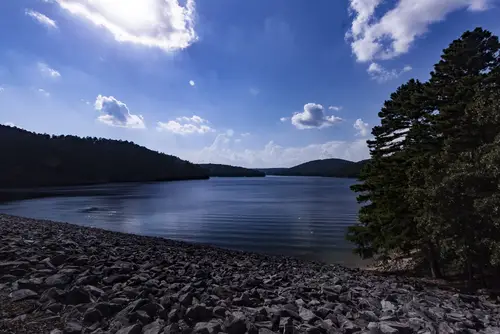
Lake Ouachita (pronounced WAH-shi-taw) is the largest lake entirely within Arkansas and drops to depths of around 200 feet. It’s also home to over 200 islands, many uninhabited, which gives it a maze-like, mysterious feel. Locals joke that if you fall in, you might not come back — mostly thanks to its twisting underwater caves. Scuba divers often report strong currents and disorienting conditions.
The lake also contains quartz crystal deposits, which some believe have mystical properties. That’s led to legends about energy vortexes and hidden caverns. Some divers claim they’ve seen formations resembling temples or altars under the water. Whether true or not, those stories help keep the “bottomless” myth afloat.
11. Blue Hole, New Mexico
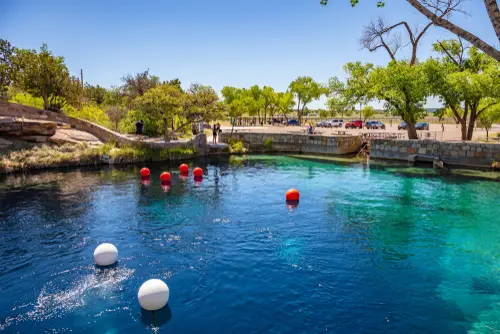
Not a lake in the traditional sense, the Blue Hole is a bell-shaped pool that’s technically a natural artesian spring. But at 80 feet deep — and only about 80 feet wide — it drops almost vertically, giving the eerie feeling of falling into a well. The water is impossibly clear, and divers can see all the way to the bottom. That hasn’t stopped people from calling it “bottomless” over the years.
Cave divers have explored its connected subterranean system, some of which is still uncharted. In fact, diving beyond a certain depth is restricted due to past accidents and the complex cave network. The stillness and vertical drop give it an uncanny, surreal vibe. It’s a favorite of thrill-seekers and the curious — if they dare.
12. Lake Pontchartrain, Louisiana

Lake Pontchartrain isn’t exceptionally deep (averaging about 12 to 14 feet), but its murky, sprawling waters have long bred tall tales. Some say there’s a whirlpool in the center that pulls things down to a mysterious bottom. Others claim there’s no true “floor,” just muck that sinks forever. Fishermen and boaters have shared stories of never retrieving dropped equipment.
Part of this belief comes from the lake’s brackish water and lack of visibility. The shifting sediment also means the bottom is constantly moving. It’s more myth than reality, but that hasn’t stopped locals from repeating the stories for generations. With New Orleans right next door, it’s no surprise this lake has its share of drama.
This post 12 U.S. Lakes That Locals Swear Are Bottomless was first published on American Charm.


